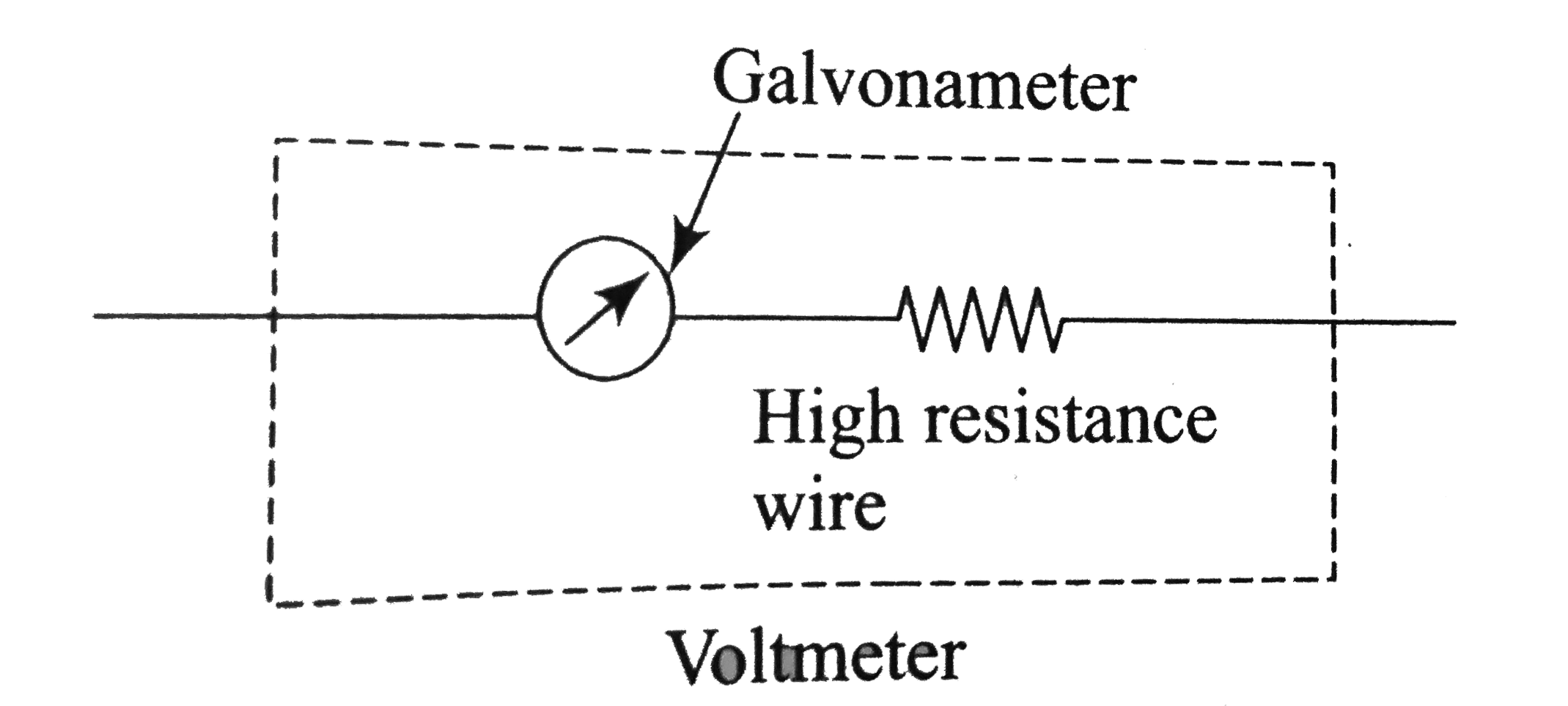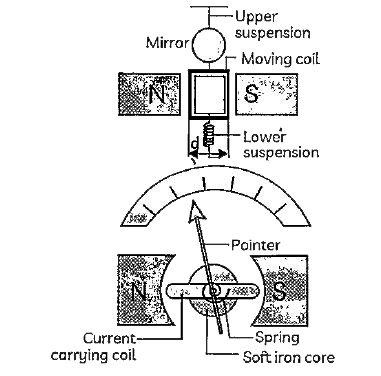A galvanometer acting as a voltmeter will have
a high resistance in parallel with its coil
a high resistance in series with its coil
a low resistance in parallel with its coil
a low resistance in series with its coil
The correct Answer is:B
The resistance of coil of galvanometer of its own is low, hence to convert a galvanometer into a voltmeter, its resistance is to be increased. For this an appropriate high resistance is joined in sereis with the galvanometre as shown in the figure. The value of this resistance to be connected depends on the range of the voltmeter.

Topper's Solved these Questions
- SOURCE AND EFFECT OF MAGNETIC FIELDBOOK - A2ZCHAPTER - SOURCE AND EFFECT OF MAGNETIC FIELDEXERCISE - AIIMS Questions
33 Videos
- SOURCE AND EFFECT OF MAGNETIC FIELDBOOK - A2ZCHAPTER - SOURCE AND EFFECT OF MAGNETIC FIELDEXERCISE - Assertion- Reason
6 Videos
- SOURCE AND EFFECT OF MAGNETIC FIELDBOOK - A2ZCHAPTER - SOURCE AND EFFECT OF MAGNETIC FIELDEXERCISE - Section B - Assertion Reasoning
31 Videos
- SEMICONDUCTOR ELECTRONICSBOOK - A2ZCHAPTER - SEMICONDUCTOR ELECTRONICSEXERCISE - EXERCISE
29 Videos
- WAVE OPTICSBOOK - A2ZCHAPTER - WAVE OPTICSEXERCISE - Section D - Chapter End Test
29 Videos
Similar Questions
Why is it that while using a moving coil galvanometer as a voltmeter, a high resistance in series is required whereas in an ammeter a shunt is used?
View Solution(a) With the help of a diagram, explain the principle and working of a moving coil galvanometer. (b) What is the imporance of a magnetic field and how is it produced ?
(c) Why is it that while using a moving coil galvanometer as a voltmeter as a voltmeter a high resistance in series is required whereas in an ammeter a shunt is used ?
View Solution
Knowledge Check
Case Study: Read the following paragraph and answer the questions.
Since a voltmeter in a series combination of a galvanometer and a high resistance R. so its resistance is much higher than the galvanometer. Higher the range of voltmeter to be prepared from given galvanometer, higher will be the value of series high resistance required for the purpose. The range of voltmeter can be both increased or decreased.

To convert a galvanometer into a voltmeter will have to addAhigh resistance in parallelBhigh resistance in seriesClow resistance in parallelDlow resistance in seriesA galvanometer having internal resistance 10Ω required 0.01 A for a full scale deflection. To convert this galvanometer to a voltmeter of full scale deflection at 120 V, we need to connect a resistance of
A11990 Ω in seriesB11990Ω in parallelC12010Ω in seriesD12010Ω in parallelFor the galvanometer working as voltmeter ______ is connected with the coil of the galvanometer.
Ahigh resistance in parallelBhigh resistance in seriesClow resistance in parallelDlow resistance in series
Explain how a moving - coil galvanometer is converted into a voltmeter . Derive the necessary formula.
View SolutionA galvanometer can be used as a voltmeter by connecting
View SolutionA galvanometer of 50 ohm resistance has 25 divisions. A current of 4×10−4 ampere gives a deflection of one division. To convert this galvanometer into a voltmeter having a range of 25 volts, it should be connected with a resistance of :
View SolutionIf G, rA and rV denote the internal resistances of a galvanometer, an ammeter and a voltmeter among the following the correct relationship is
View SolutionIf G,rA and rV denote the internal resistances of a galvanometer, an ammeter and a voltmeter among the following the correct relationship is
View Solution
